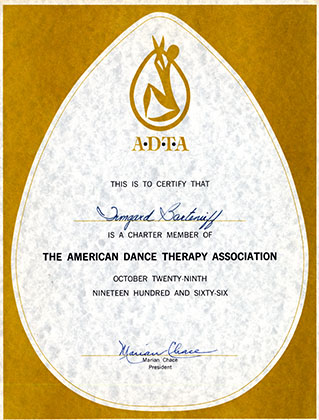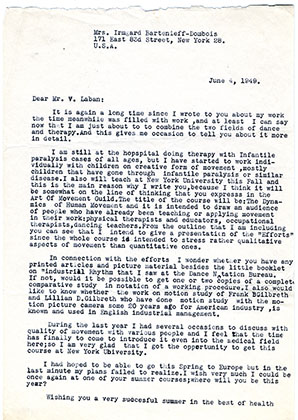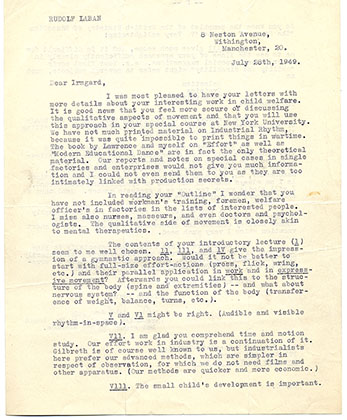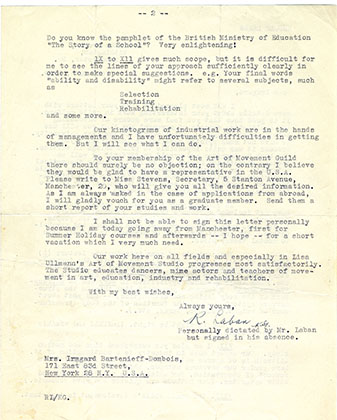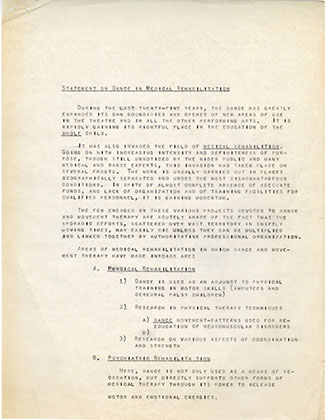Irmgard helps found the ADTA
As early as the 1940s (before working with Le Clercq), Bartenieff began experimenting with combining dance and therapy, strongly believing that the arts could assist medical approaches to healing. In 1949 she discussed her ideas with Rudolf Laban in a letter. Laban fully supported using movement analysis as a therapeutic support and eventually added therapy to the curriculum for his school in England, the Laban Art of Movement. Formalizing the connection between Dance and Therapy, Bartenieff became a founding member of the American Dance Therapy Association (ADTA) and from 1959 through 1962 taught Dance Therapy at the Day Hospital Department of Psychiatry (Jacobi Hospital) and at the Turtle Bay Music School.
Irmgard becomes certified through ADTA
According to the American Dance Therapy Association, Dance Therapy is: "psychotherapeutic use of movement to promote emotional, social, cognitive and physical integration of the individual. It is: Focused on movement behavior as it emerges in the therapeutic relationship. Expressive, communicative, and adaptive behaviors are all considered for group and individual treatment. Body movement, as the core component of dance, simultaneously provides the means of assessment and the mode of intervention for dance/movement therapy. Practiced in mental health, rehabilitation, medical, educational and forensic settings, and in nursing homes, day care centers, disease prevention, health promotion programs and in private practice. Effective for individuals with developmental, medical, social, physical and psychological impairments. Used with people of all ages, races and ethnic backgrounds in individual, couples, family and group therapy formats."
To become a Certified Dance Therapist, a practitioner must complete hours of training and observation. Although she had been working in and developing this field for some time, Irmgard was given her certificate in 1966 from Marion Chace.
